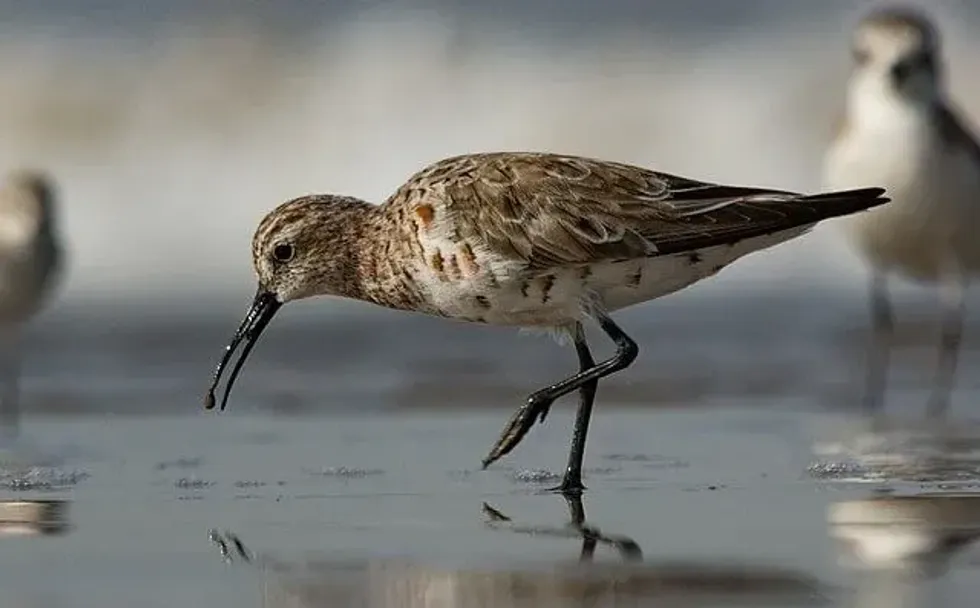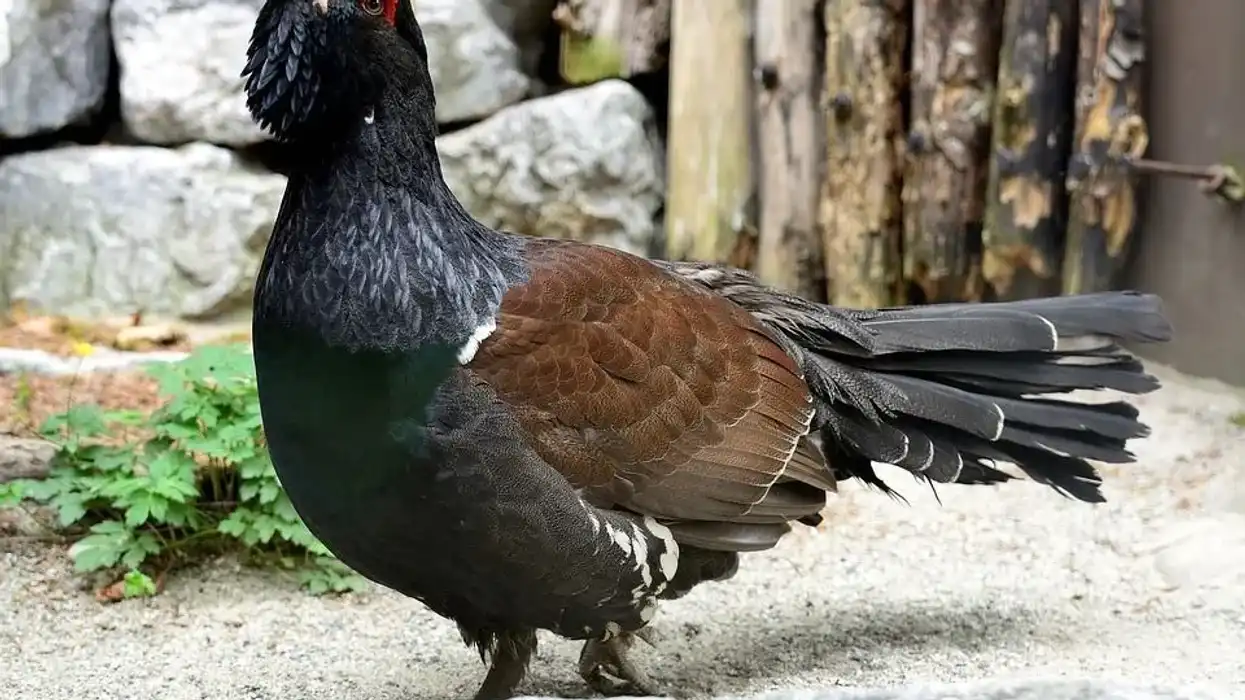A vast variety of birds, such as curlew sandpiper (Calidris ferruginea), are seen flying in the wilderness of the sky. These avians are intelligent beings and are seen doing heavy physical activities.
These sandpipers move around foraging for food, building their nests, and feeding and looking after their young ones. One such bird we are going to be discussing in this article is a sandpiper.
A curlew sandpiper is a wader native to the tundra region of Arctic Siberia. These sandpipers are known for their unique plumage that appears like iron rust and a comparatively long bill.
These breeding birds are heavily migratory and are found in Africa during winters in Asia, Australia, and New Zealand. These birds are quite similar to dunlins which are small waders.
This bird species belongs to the genus Calidris, the genus of breeding heavily in the Arctic region. These sandpipers were first described by Danish author Erik Pontoppidan and are scientifically known as Calidris ferruginea.
These birds winter in Africa, Australia, Southeast Asia, and the Middle East Asia region but during breeding season migrate to the tundra forests of Siberia. Here are some of the most interesting facts about the curlew sandpiper (Calidris ferruginea) for your perusal. Afterwards, do check our other articles on spotted sandpiper facts and western sandpiper facts as well.
Curlew Sandpiper Interesting Facts
What type of animal is a curlew sandpiper?
A curlew sandpiper is a bird and is mostly found dwelling in the sea and the other ocean bodies. This bird is native to Siberian Tundra and is very similar to dunlins. Long beaks and white supercilium are characteristic features of these birds of the world.
What class of animal does a curlew sandpiper belong to?
A curlew sandpiper species is a bird and belongs to the class Aves of phylum Chordata. These medium-sized birds further belong to the family Scolopacidae, the family of large waders and shorebirds in the order Charadriiformes that encompasses around 350 species of birds across the world.
How many curlew sandpipers are there in the world?
These migratory shorebird species breed in good numbers across the world. Their global population is around 1,80,000-1,85,000 are found mainly in the East Asian Australasian Flyway according to the old data.
Where does a curlew sandpiper live?
A curlew sandpiper species is the inhabitant of the tundra region in Siberia. Besides, it migrates heavily and in winter mainly to Africa, Australia, Southeast Asia, and the Middle East Asia region during August and September.
What is a curlew sandpiper's habitat?
A curlew sandpiper species is a shorebird and is often found in marshes, estuaries, non-tidal swamps, lagoons, inlets, bays, ponds, and across such regions of the world that show heavy vegetation and enough water to survive. During winter these birds migrate to sub-Saharan Africa through Middle-East, Southeast Asia to Australasia.
Who do curlew sandpipers live with?
These gregarious birds species live in flocks of their own species and also form small flocks with other birds of their genus Calidris. The flock of sandpipers is generally known as a bind or a contradiction.
How long does a curlew sandpiper live?
Unlike many other birds species, these rusty-looking birds species show decent longevity. On average, an adult bird can live for 10 years.
Their increased life span is maybe due to the migratory habits that aid them in better survival. Other sandpipers like least sandpipers and stilt sandpipers have a lifespan of around 12 years and three to five years, respectively.
How do they reproduce?
This species migrates in the high grounds of the Arctic Tundra region of Siberia where sandpipers mate in the breeding season. During the breeding season, the appearance of the breeding plumage changes to deep rusty on head and body, like a red knot.
After the courtship display and mating process, the female conceives and lays around three to four eggs in a clutch.
The male breeding adult bird stays there till the breeding adult female lays the eggs but leaves soon after the eggs are laid. The breeding adult female only takes care of the young juvenile birds till they are ready to fledge.
What is their conservation status?
According to the IUCN Red List, these birds are placed in the Near Threatened category of species. Increasing population and inhibition of their natural habitat by humans has imposed a heavy threat to their survival. The AEWA agreement for the conservation of migratory waterbirds applies to the conservation of these species of birds.
Curlew Sandpiper Fun Facts
What do curlew sandpipers look like?
A curlew sandpiper, a migratory shorebird is a small-sized wader. Sandpipers have a pair of black legs and feet and a characteristic black long bill that curves down at the end with beautiful plumage.
The non-breeding birds have a grayish-brown plumage above and white on the underside. During the flight, the white wing bars are clearly visible. In the breeding birds, the plumage is bright reddish-brown underneath and wings have black bands.
A similar red knot, Calidris canutus, is larger in size and has a straighter bill. In winter, this bird is pale gray above and white below and during the non-breeding season the plumage changes to gray-brown above and white below.
How cute are they?
These birds are small-sized and may appear a little snobby owing to their large bill but it is a really cute one. These breeding birds have a really adorable appearance, especially during flight.
How do they communicate?
Shorebirds in general make loud calls. These nesting birds have their ways of communicating during aerial display and courtship. Besides, they also communicate through their vision and mating calls.
How big is a curlew sandpiper?
It is a medium-sized wader. An average adult sandpiper may measure in the range of 7.1-9.1 in (18-23 cm) in length. Apart from this, their wingspan measures in the range of 15-16 in (38-41 cm) in length.
How fast can a curlew sandpiper fly?
It is a fast flyer. On average, a sandpiper just like any other shorebird can reach a maximum speed range of around 60 mph (96 kph).
How much does a curlew sandpiper weigh?
A curlew sandpiper just like most other birds is a lightweight organism. An average adult bird may weigh around 1.55-4.12 oz (44-117 g) in weight. Their lightweight is the result of their dynamic body type, plumage for the exoskeleton, and small body size.
What are the male and female names of the species?
The breeding adult male and breeding adult female curlew sandpiper birds do not have any separate names and are referred to as males and females. Female birds are slightly smaller in appearance than male birds.
These birds have a deep rusty head and body (like red knot), long bill and long legs, white rump patch during the breeding period, and grayish-brown upperparts with white eyebrows and belly, long bill and long legs, white rump patch during the non-breeding period.
What would you call a baby curlew sandpiper?
A baby curlew sandpiper is referred to as a juvenile. Juvenile birds have a distinct appearance; their back is covered in gray-brown feathers, while the belly is totally white and the breast is peach in color. In winter, the juvenile bird resembles the appearance of an adult. Juvenile birds make chirrup calls while foraging.
What do they eat?
These birds have mostly seen dawdling and foraging along the sea coast and there these nesting birds like feeding mainly on a variety of marine invertebrates, Polychaeta worms, and a variety of insect larvae.
Are they dangerous?
They are pretty docile birds and very social as well. They are not dangerous, useless, they are threatened. A male bird may get aggressive while defending its territory but besides that, they are not a threat to humans.
Would they make a good pet?
Shorebirds need a vast space to fly and forage. Besides, a curlew sandpiper shows unique social behavior and migrates in flocks of a hundred birds in total this shows that they may not make really good pets and they might not be able to survive a captive environment.
Did you know...
Hybridization between a curlew sandpiper and sharp-tailed sandpiper gives rise to Copper’s sandpiper and that between curlew sandpiper and pectoral sandpiper gives rise to cox’s sandpiper.
A sandpiper is a snipe from the family Scolopacidae.
Sanderlings are small, plump sandpipers with a stout bill and similar size.
Why is the curlew sandpiper Endangered?
A variety of factors affect their habitat. First is increased industrialization and urbanization leading to loss of marshes, lagoons, and swamps where these birds reside. A second most important reason is the overuse of gadgets and increased ionizing radiation in the atmosphere that affects their natural behavior.
What are sandpipers known for?
Sandpiper birds show a phenomenon, namely teetering. In this, they bob their heads up and down, and during flight, their wings are kept stiff and in a bowed position. Lastly, during flight, they give a distinctive three-note call that helps spectators in distinguishing them from other birds.
Here at Kidadl, we have carefully created lots of interesting family-friendly animal facts for everyone to discover! For more relatable content, check out these golden-cheeked warbler facts and great white pelican facts pages.
You can even occupy yourself at home by coloring in one of our free printable curlew sandpiper coloring pages.










